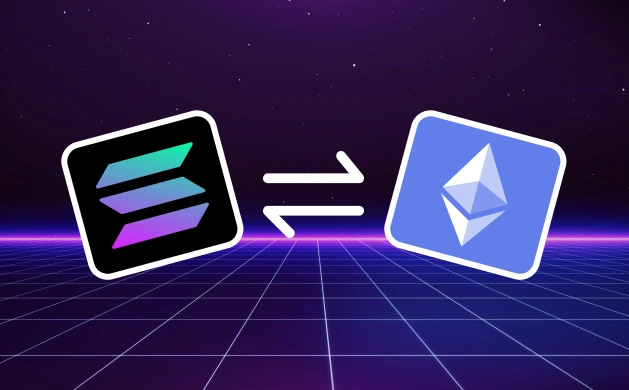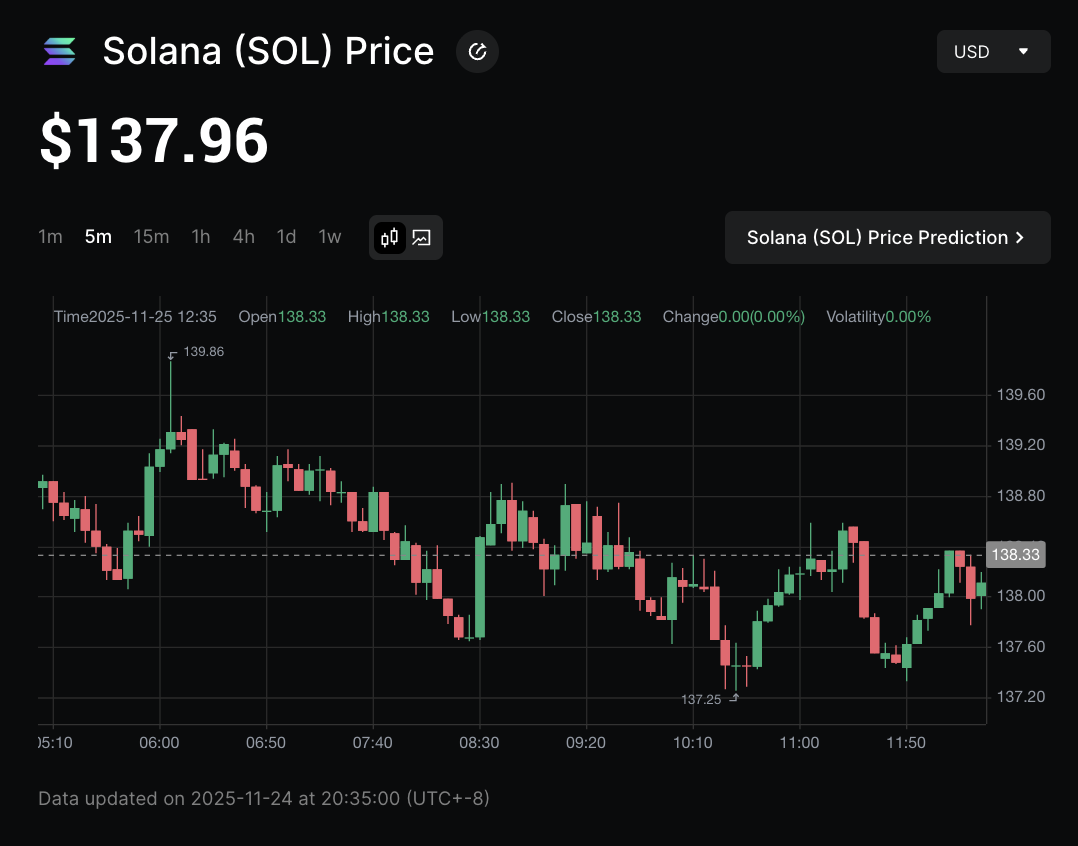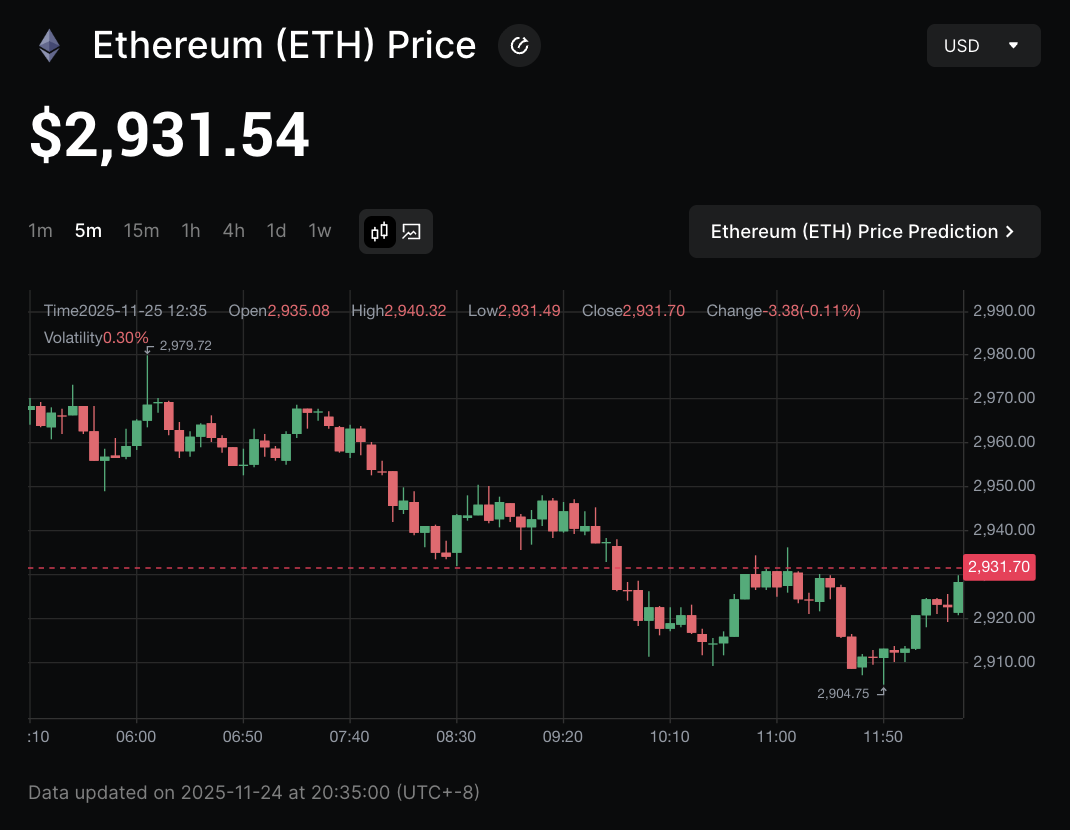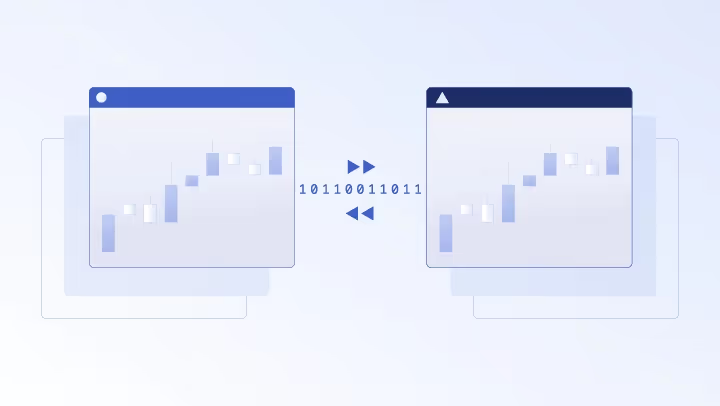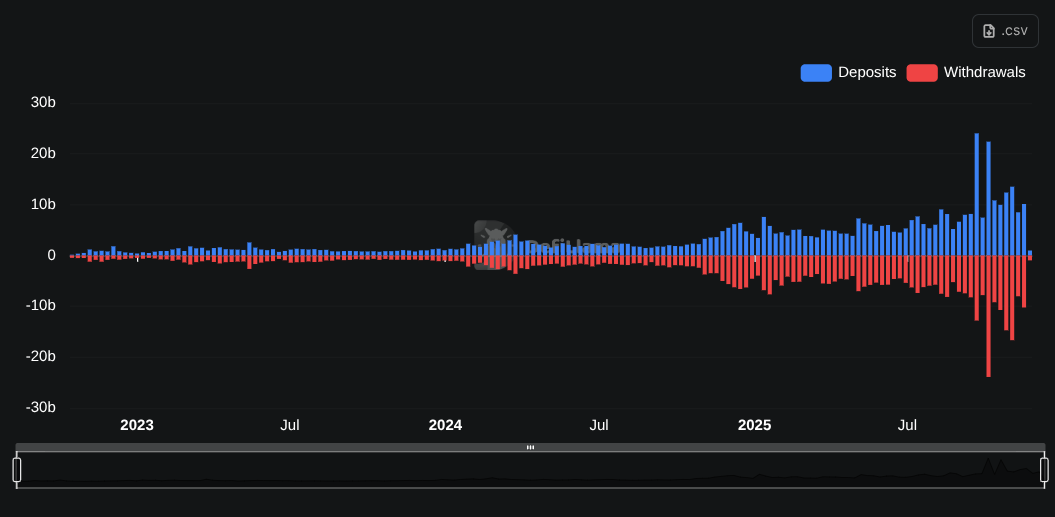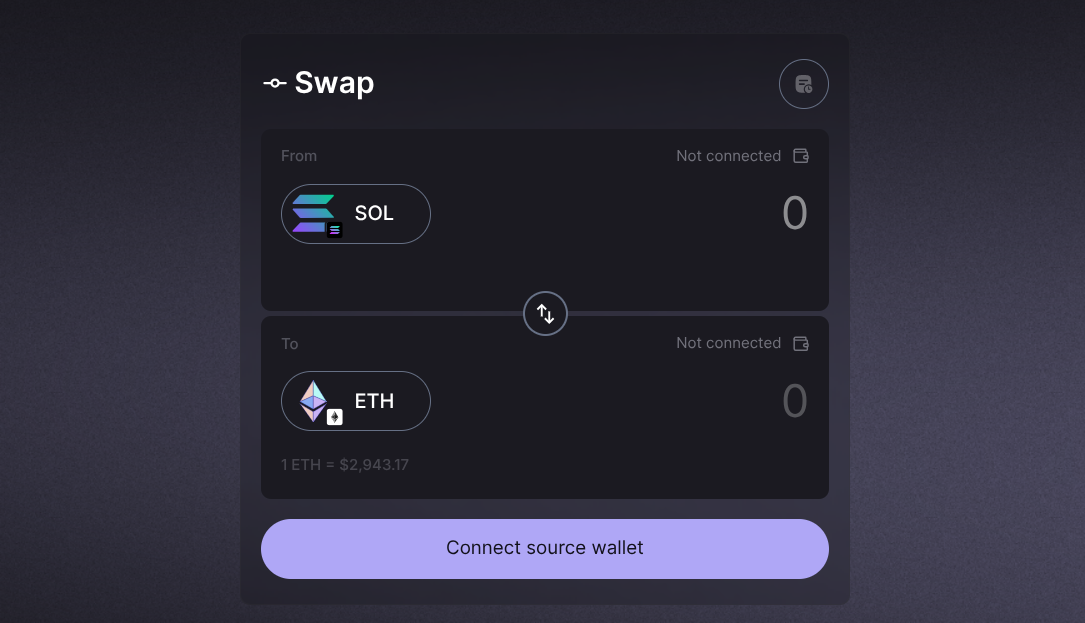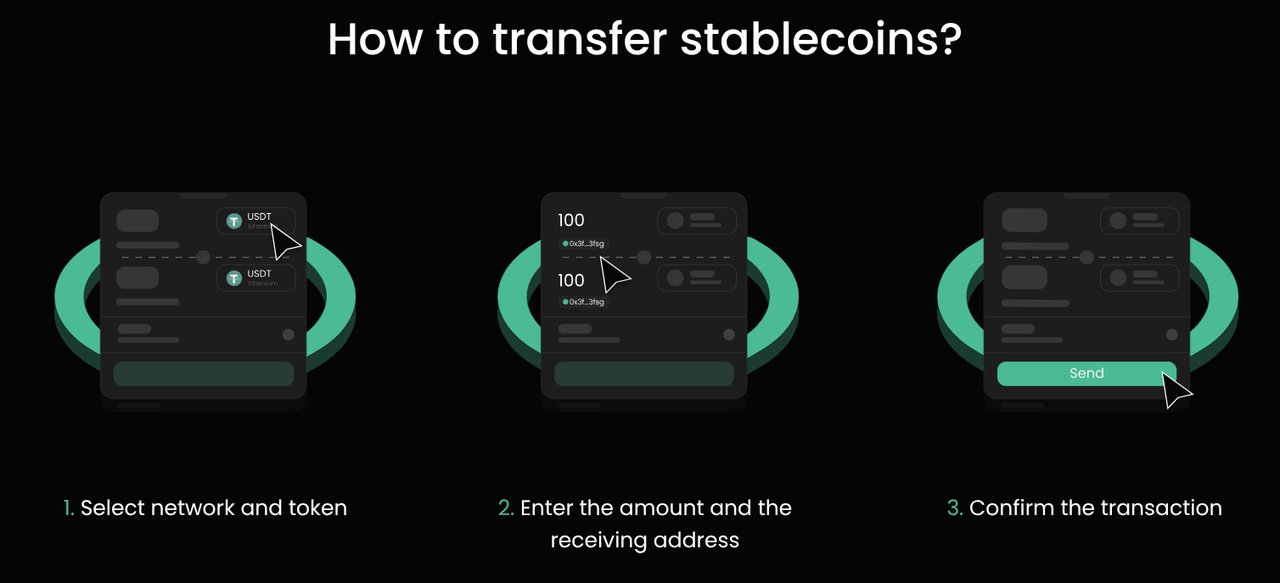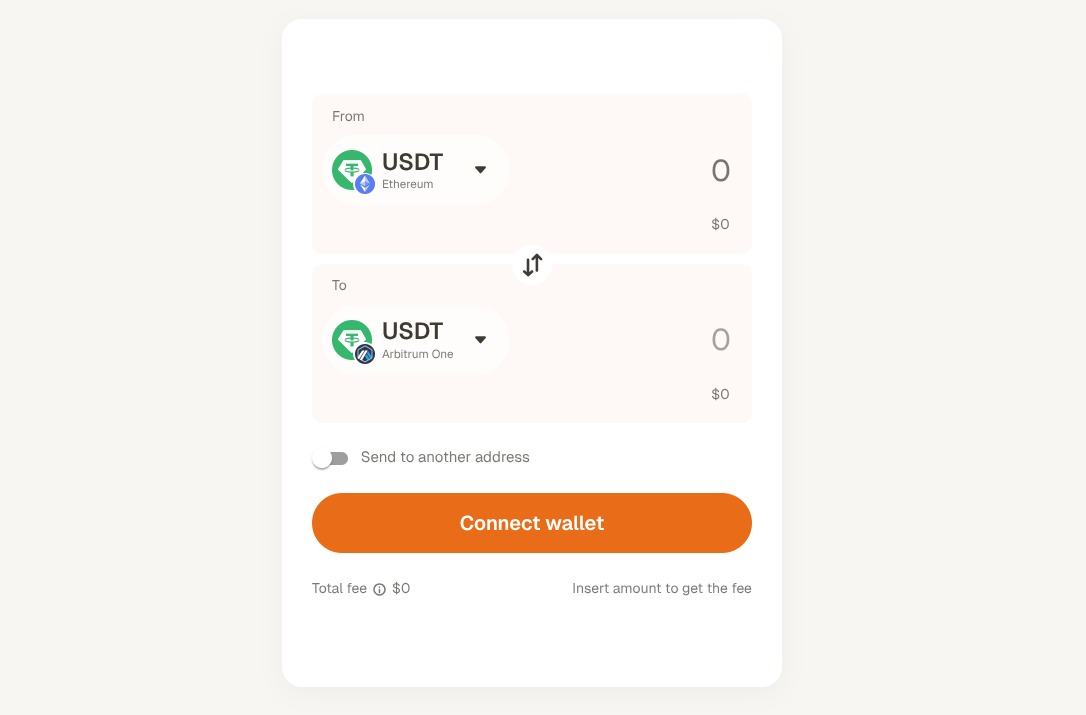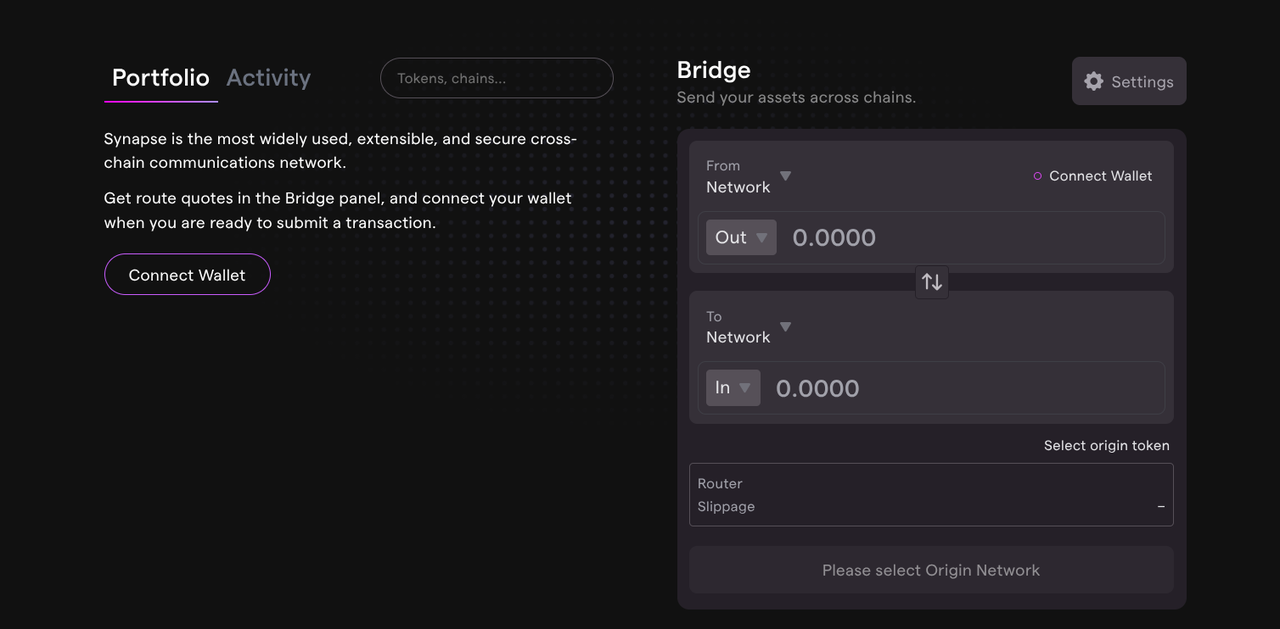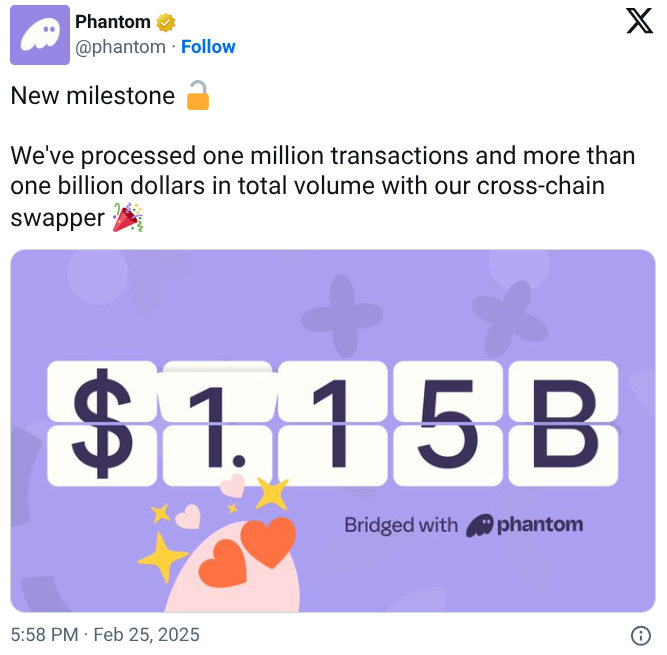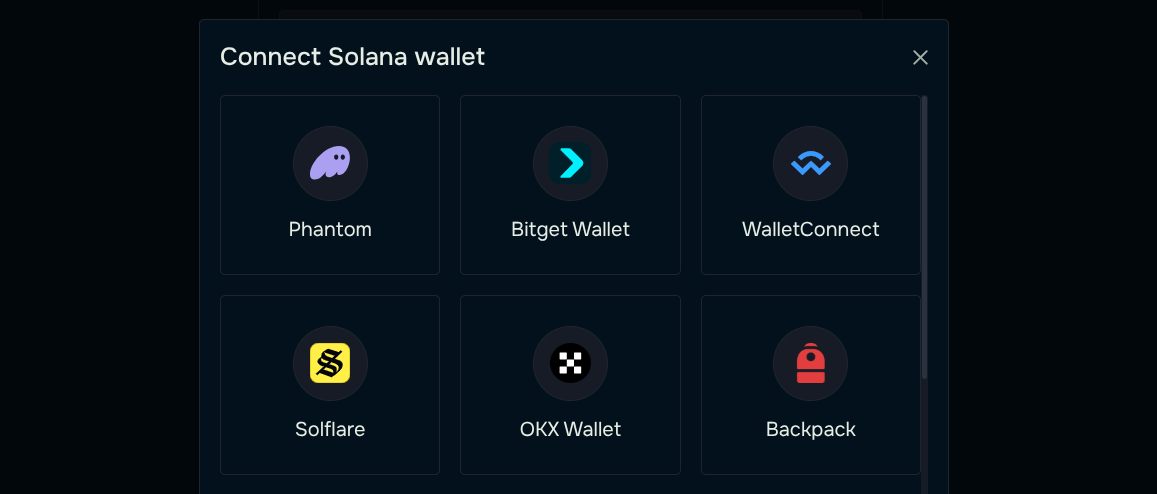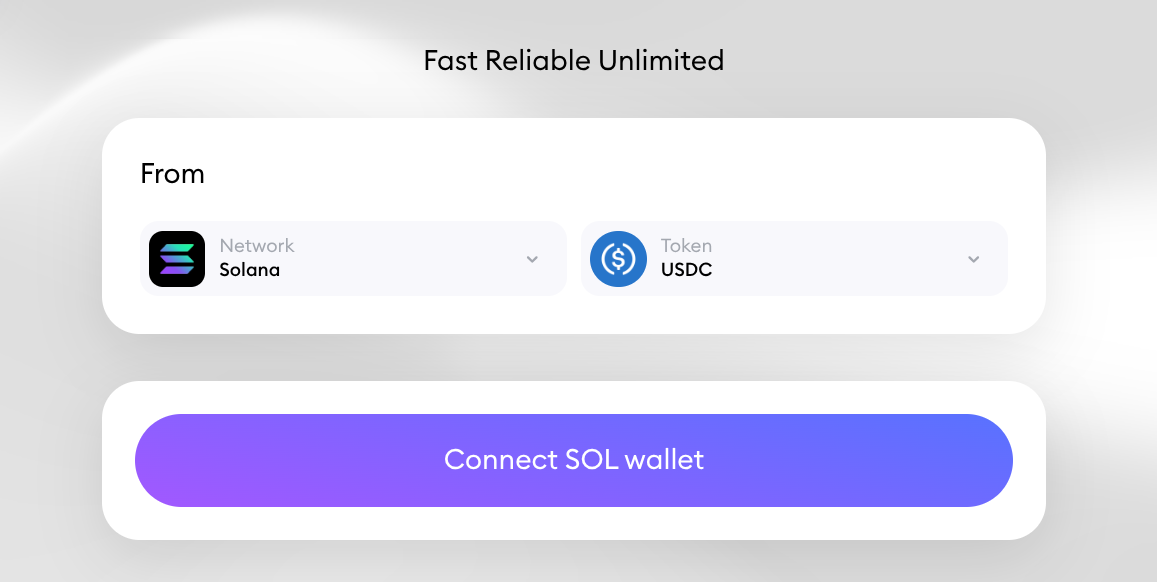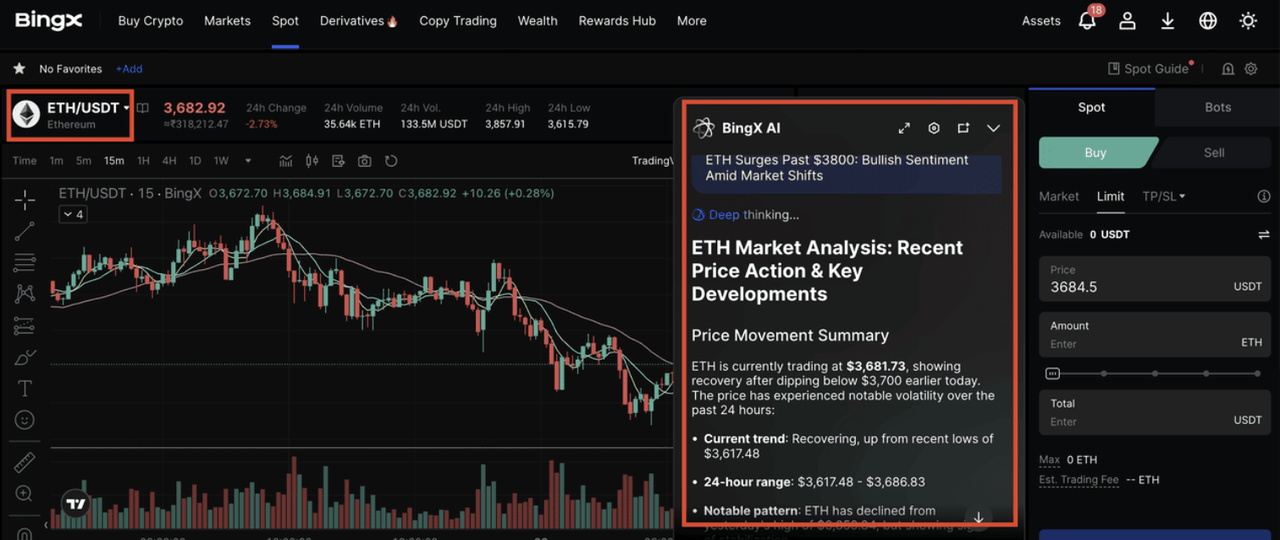Bridging crypto assets between blockchains has become a fundamental part of decentralized finance, allowing users to move tokens efficiently and access platforms that would otherwise be restricted. In 2025, billions of dollars are transferred daily across chains such as
Solana and
Ethereum, driven by demand for liquidity,
staking, and participation in DeFi ecosystems.
According to DefiLlama, Solana's cross-chain bridge volume alone reaches tens of millions of dollars per day. Users can leverage bridges to take part in yield farming, decentralized exchanges, and
NFT marketplaces without needing to sell their original tokens. Platforms like
Phantom, deBridge, and Portal Bridge have optimized this process, making transfers faster, cheaper, and more secure, often taking only a few seconds to a few minutes depending on network congestion.
Bridging between Solana and Ethereum is particularly powerful because Solana offers ultra-fast transactions and very low fees, while Ethereum provides deep liquidity, a mature DeFi ecosystem, and a rich set of protocols. By bridging assets, users can take advantage of the best of both worlds without sacrificing their original holdings.
What Is Solana (SOL)?
Solana is a high-performance
layer-1 blockchain designed for speed and scalability. It uses a unique consensus mechanism combining Proof of History and
Proof-of-Stake, enabling extremely efficient transaction ordering. Solana consistently handles between 1,500 and 4,000 transactions per second in normal conditions, and stress tests have shown the network capable of supporting more than 50,000 transactions per second. Block times average around 400 milliseconds, and transaction fees typically cost less than one cent, making the network one of the most cost-effective blockchains in the industry.
Solana's ecosystem has grown rapidly, surpassing tens of billions of dollars in monthly transaction volume and supporting millions of active wallets. This combination of speed, low cost, and widespread adoption makes Solana one of the most influential blockchains in the modern DeFi and NFT space.
Layer-1 Source: WallStreetMojo
What Is Ethereum (ETH)?
Ethereum is one of the most widely used and influential blockchains in the crypto ecosystem and serves as the backbone of decentralized applications. Now running on Proof-of-Stake, it processes new blocks roughly every 12 seconds, with network throughput around 15 to 30 transactions per second. Despite lower raw speed compared to newer chains, Ethereum dominates in economic activity, securing more than 35 to 40 billion dollars in total value locked across its DeFi protocols. It hosts thousands of
DApps, supports millions of daily active users, and continues to attract developers at a scale unmatched by any other chain. Ethereum's deep liquidity, extensive infrastructure, and highly decentralized validator network make it the most important settlement layer in crypto, powering everything from stablecoins to major lending platforms.
What Are Crypto Bridges and How Do They Work?
Crypto bridges are specialized protocols that allow assets to move from one blockchain to another while maintaining value and security. They achieve this by locking tokens on the source chain and minting equivalent tokens on the destination chain, effectively creating a cross-chain representation. For example, Solana's SPL tokens are wrapped into Ethereum-compatible ERC-20 tokens during bridging. Founders such as Anton Bukov and Alex Shevchenko, who launched deBridge in March 2023, focused on building bridges that are both fast and secure, and as of March 2025, deBridge has facilitated over $10 billion in cross-chain transfers. Bridges have become increasingly important as multi-chain ecosystems grow, making interoperability a core feature of modern crypto networks.
Why Should You Use Crypto Bridges?
Crypto bridges provide access to liquidity pools, staking opportunities, and DeFi applications that are native to other blockchains. For example, Ethereum hosts platforms like
Aave,
Uniswap, and
Lido that offer high yields not available on Solana, making bridging a critical tool for maximizing returns. By bridging, Solana users can earn staking rewards, participate in
decentralized lending, or provide liquidity without selling their assets.
Fees are generally low;
deBridge charges a flat 0.03 SOL per transaction, while Ethereum gas fees during peak times typically range from $5 to $15, and bridges like Portal Bridge and Synapse have consistently processed thousands of transactions daily with minimal downtime. Bridging also helps users diversify risk across networks, since holding assets on multiple chains can mitigate exposure to a single blockchain's network failures.
How Do Cross-Chain Bridges Work?
Cross-chain bridges enable tokens to move between blockchains by combining smart contracts, validators, and token-wrapping mechanisms to maintain security and value. When a user bridges an asset, the bridge locks the original token on the source chain, such as SOL on Solana, and mints an equivalent wrapped token, like an ERC-20 version, on the destination chain, such as Ethereum. Validators monitor and confirm these transactions to prevent double-spending, while audits from firms like Halborn, Zokyo, and Immunefi ensure the smart contracts are secure against exploits.
Transfer speeds vary from seconds on optimized platforms like Portal Bridge to several minutes during network congestion, and some bridges batch transactions or use multi-step validation to reduce fees and improve reliability. Many bridges also feature decentralized governance, allowing communities to vote on updates, fees, and supported tokens, which adds transparency and trust. By combining these technical, security, and governance layers, cross-chain bridges make multi-chain liquidity, DeFi participation, and token interoperability possible, effectively connecting ecosystems like Solana and Ethereum.
Source: DefiLlama
What Are the Top Ways to Bridge Assets From Solana to Ethereum?
Portal by Wormhole, deBridge, Allbridge, Synapse, Rhino.fi, and Phantom's built-in bridging tools are among the most popular options for moving assets across blockchains. Each platform offers a different blend of speed, cost efficiency, security audits, and supported assets, giving users a variety of choices depending on their priorities when transferring between Solana and Ethereum.
1. Portal by Wormhole (W)
Portal by
Wormhole is one of the most widely used cross-chain bridges and supports fast, reliable transfers between Solana, Ethereum, and several other major ecosystems. Its infrastructure is built around high-security guardians and frequent audits, allowing it to complete transfers within seconds under normal network conditions. Many DeFi users choose Portal for its strong reputation, straightforward interface, and ability to handle both tokens and NFTs efficiently.
2. deBridge (DBR)
deBridge is another major cross-chain solution that enables seamless transfers between Solana, Ethereum, and more than fifteen other blockchains. Known for its stability and security, deBridge has processed over ten billion dollars in cross-chain volume as of 2025 without major security incidents. It charges a flat fee of 0.03 SOL for Solana-originating transfers and offers additional cross-chain use cases such as swaps, lending access, and DeFi app integrations. deBridge is especially popular for users who want predictable fees and consistent settlement times.
3. Allbridge
Allbridge is a user-friendly platform designed to connect assets across a wide range of blockchain networks, including both Solana and Ethereum. Its simple interface and broad token support make it accessible to beginners who want a clean, fast experience without unnecessary complexity. Allbridge is also known for its wide coverage of niche blockchains, giving users more flexibility if they plan to bridge assets beyond the major ecosystems.
4. Rhino.fi
Rhino.fi is optimized for high-liquidity swaps and cross-chain transfers, offering a streamlined experience for users who want both bridging and swapping in a single workflow. It handles roughly two billion dollars in monthly volume and typically completes transfers in one to two minutes. The platform charges about 0.19 percent in fees and is especially useful for users who want to move assets quickly without manually managing multiple wallets and networks.
5. Synapse
Synapse focuses on low-cost cross-chain transfers and extremely high uptime, making it a preferred option for users who frequently interact across ecosystems. It supports quick bridging routes, a wide token list, and a strong history of reliable performance. While Synapse is often used for
EVM-to-EVM bridging, it also provides efficient pathways for Solana-to-Ethereum flows through partnered routes.
6. Phantom
Phantom's role as a bridge facilitator continues to grow, with over $1.15 billion in bridged assets processed through its ecosystem. Many users prefer Phantom because it eliminates setup friction by allowing bridging directly inside the wallet, using trusted partner routes. This gives Solana users a native, streamlined experience with fewer steps, making Phantom one of the most convenient options for beginners moving assets to Ethereum.
Source: Phantom
7. Crosschain Swapper
Portal by Wormhole, deBridge, and Allbridge offer robust cross-chain bridging solutions and remain excellent choices for users looking to move assets across different blockchains. However, even with these platforms, bridging can still feel complicated. Users often encounter multiple approval steps, network switching, unpredictable gas fees, and the need to manually track settlement progress.
To remove this friction and simplify the entire experience, the Crosschain Swapper was introduced as an all-in-one tool that abstracts away the technical complexity behind traditional crypto bridges. Instead of juggling networks, confirmations, and contract interactions, users can simply choose the asset they want to swap and the destination chain, and the Swapper handles the rest. It is designed to offer a smooth, frustration-free way to bridge between Ethereum and Solana, making it the ideal option for users who want seamless cross-chain functionality without navigating the usual hassles.
How to Bridge from Solana to Ethereum: Step-by-Step
Source: DataWallet
Step 1: Connect Your Wallet
Start by accessing the bridge platform, such as deBridge, and connect both your
Solana wallet, like Phantom, and your
Ethereum wallet, such as
MetaMask. Wallet connection is verified through a small authentication transaction that takes less than 30 seconds, ensuring the platform can safely access your assets for bridging. Keeping wallets updated to the latest versions reduces the risk of connection errors, which are a common cause of failed transfers. Ensuring proper wallet setup is essential before moving any significant funds, as even small misconfigurations can lead to failed or delayed transactions.
Source: deBridge
Step 2: Choose Networks and Tokens
After connecting your wallets, select Solana as the source network and Ethereum as the destination. Then choose the SPL token you want to bridge, such as
SOL or
USDC. It is vital to confirm token compatibility because sending unsupported tokens can result in permanent loss. Checking network congestion helps estimate transfer times, as Ethereum can experience high gas fees and slower confirmations during peak periods. Users should also verify minimum transfer amounts, since some bridges impose thresholds, such as 0.1 SOL for deBridge or 10 USDC for Portal Bridge.
Step 3: Confirm and Authorize
Enter the amount to bridge and approve the transaction in your Solana wallet, which triggers the locking of your tokens on the source chain. Validators confirm the transaction, and the equivalent ERC-20 token is minted on Ethereum. Fees include the bridge's fixed rate plus Ethereum gas, typically totaling $6 to $10, but this can rise if network congestion spikes. Confirming details such as token type, destination wallet, and transfer amount is critical because errors at this stage cannot be reversed.
Step 4: Receive Assets on Ethereum
Once approved, your tokens appear on Ethereum within seconds to a few minutes depending on network activity. After receipt, the tokens can be used for trading, liquidity provision, staking, or other DeFi activities. Users should always verify the token balance in their Ethereum wallet and double-check the receiving address. Monitoring transaction status through platforms like Etherscan or the bridge's own explorer ensures that any delays or anomalies are identified early.
Common Issues Faced When Bridging Between Ethereum and Solana
Bridging assets between Solana and Ethereum is generally straightforward, but several common issues can arise due to the complexity of cross-chain interactions:
1. Network Congestion
Network congestion is one of the most frequent issues users encounter when bridging between Solana and Ethereum, as both chains experience periodic traffic spikes during NFT mints, token launches, or large DeFi movements. On Solana, congestion may cause RPC nodes to slow down, wallet confirmations to hang, or transactions to be dropped entirely when the network is prioritizing higher-fee instructions.
On Ethereum, congestion often manifests through rapidly spiking gas prices, pushing fees from the normal $5 to $15 range up to $40 or more, which can cause pending bridging transactions to stall for long periods. Users can avoid these delays by checking network dashboards for both chains prior to bridging, scheduling transfers during off-peak hours when activity is lower, and increasing gas fees slightly on Ethereum to ensure strong prioritization. Taking these steps reduces the likelihood of stuck transactions and ensures bridging completes in minutes instead of hours.
2. Wallet Connection Errors
Wallet connection issues are extremely common because bridging requires authenticating two separate wallets across two different networks, each with its own browser session, cached data, and extension version. Phantom, for example, may refuse to connect if the extension is outdated or if the user has multiple conflicting browser tabs open, while MetaMask can fail to authenticate if the user is not on the Ethereum network or if a previous session is still cached.
These issues can interrupt the entire bridging flow and create confusing "wallet not found" or "connection failed" errors on the bridge interface. These problems can be minimized by keeping Phantom and MetaMask updated to the latest version, clearing browser cache before bridging, and ensuring the user manually selects the correct chain in MetaMask before reconnecting. Switching to another browser or using the bridge's incognito-mode connection option can also eliminate hidden extension conflicts that cause authentication failures.
3. Selecting Incompatible Tokens
Many users run into problems by attempting to bridge tokens that have no wrapped or supported version on the destination chain. Some Solana SPL tokens do not have ERC-20 equivalents on Ethereum, and some tokens bridged on older platforms may have outdated or deprecated contract addresses. Sending unsupported tokens can cause the transaction to fail, result in indefinite lock-ups or, in the worst case, permanently trap tokens in an unusable contract.
To avoid this, users should always verify compatibility on the bridge's supported-token list, confirm the token symbol and contract address directly in the interface, and avoid bridging obscure or low-liquidity tokens without checking liquidity on the target chain. Performing a small test transaction first can also confirm that the bridge recognizes the token and mints the correctly wrapped version on Ethereum.
4. Insufficient Gas or Fees
A large number of bridging failures happen not because of technical bugs but simply because users do not hold enough ETH or SOL to cover the required network fees. Even if the bridge charges a flat or predictable fee, the Ethereum gas component can fluctuate during times of high demand, causing a transaction to fail midway if the gas price spikes unexpectedly. When this happens, tokens may remain locked on the source chain until the user manually resubmits or pays additional gas to push the transaction through.
This issue is easy to prevent by ensuring both wallets contain more than the minimum expected amount of SOL and ETH before starting the bridge, using gas-fee estimators to predict potential spikes, and slightly overestimating gas on Ethereum to avoid underfunding. Keeping a buffer in both chains ensures bridging proceeds smoothly even when gas conditions change rapidly.
5. Temporary Bridge Downtime or Maintenance
Even the most secure bridges occasionally go offline for upgrades, audits, or temporary security checks, which can cause transactions to pause unexpectedly. During downtime, the bridge interface may still allow users to initiate transfers, but the final settlement process could halt or delay until systems are back online. This can be confusing and stressful, especially when large amounts of funds appear stuck in limbo or fail to show up on the destination chain.
To avoid these interruptions, users should quickly check the bridge's service status, social media updates, or Discord announcements before sending high-value transfers. Delaying the transfer until maintenance ends greatly reduces the chance of unexpected settling delays and helps ensure that funds arrive on the target chain without interruptions.
6. Transaction Stuck or Missing
Cross-chain bridging involves multiple validators, oracles, and smart contracts communicating between two independent blockchains, so transactions occasionally appear stuck, missing, or unconfirmed. This can happen when Solana or Ethereum validators slow down, when a message relay is delayed, or when the destination chain has not yet indexed the wrapped version of the token. Although the transaction is usually safe, users may panic when the transfer remains pending for an extended period.
In most cases, the issue is resolved by checking the transaction ID on both Solana Explorer and Etherscan, refreshing the bridge's status tracker, or using the platform's recovery tool to re-send the message. Keeping the transaction signature saved, following the bridge's troubleshooting prompts, and contacting support with the transaction hash helps resolve even the most stubborn bridging delays.
Top Risks to Consider When Bridging Solana to Ethereum
Source: Phantom
Bridging involves several security, operational, and financial risks that users need to manage carefully. Smart contract vulnerabilities have caused multi-million-dollar losses in high-profile exploits, highlighting the importance of using audited and well-established platforms like deBridge, Rhino.fi, and Portal Bridge. Ethereum gas fees can fluctuate unpredictably, raising transfer costs during periods of high network activity, while congestion on either chain may delay token availability or temporarily lock funds.
Validator failures, misconfigurations, or bridge downtime can also prevent timely access to assets. Users can mitigate these risks by performing small test transfers before moving significant amounts, keeping track of network conditions and bridge announcements, and diversifying assets across multiple chains and platforms. Additionally, understanding the mechanics of the bridge being used and double-checking token compatibility and destination addresses can help avoid costly mistakes and ensure smoother cross-chain transfers.
How to Buy Ethereum or Solana Directly on BingX
Getting started with Ethereum or Solana is easy and BingX makes it even smoother. BingX allows you to buy popular cryptocurrencies like
ETH and
SOL directly on its spot market to start using DeFi apps, trading NFTs, or exploring Web3. You can create an account, complete
KYC verification, deposit
USDT,
USDC, or fiat currency, and instantly buy ETH or SOL through the
Spot Trading section. Once purchased, you can securely store your ETH or SOL in your BingX wallet or transfer it to a personal wallet for self-custody and DeFi participation.
Buy Ethereum on BingX spot market, powered by BingX AI's automated market analysis
BingX is a great choice because it offers low trading and transfer fees, deep liquidity for seamless transactions, and real-time prices on major tokens. With
BingX AI providing smart market insights, plus a beginner-friendly interface and advanced security, it's easy and safe to buy crypto.
With BingX, you're set up for a fast, secure, and affordable Web3 onboarding experience.
Buying Ethereum and
Solana on BingX gives you full ownership of your Ethereum, enabling you to stake it for rewards, use it in DeFi applications, or transfer it globally 24/7.
Conclusion
Crypto bridges are a crucial tool for users looking to unlock the full potential of their assets across multiple blockchains. Platforms like deBridge, Rhino.fi, and Portal Bridge enable fast, secure, and cost-effective transfers from Solana to Ethereum, providing access to a wide range of DeFi applications such as staking, liquidity provision, and
decentralized exchanges. Phantom alone has facilitated over 1.15B dollars in bridged assets, highlighting the growing adoption and scale of cross-chain activity. To maximize the benefits of bridging, users should carefully follow step-by-step procedures, anticipate common issues, and understand the inherent security and operational risks. With proper planning, risk management, and the use of audited platforms, bridges empower investors to optimize returns, diversify holdings, and actively participate in the expanding multi-chain crypto ecosystem.
Related Reading

